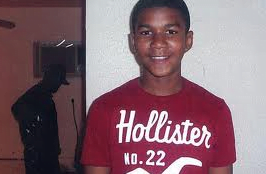The nineteenth session of the United Nations Human Rights Council is taking place in Geneva this month. The United States is currently a member of the UNHRC, after much bemoaning of how it would be yet another playground of dictators and rights abusers. Joining up was the right choice; it’s hard to influence change on the outside looking in. Since the US first won a set on the Council, much substantive work has been done on how to better improve the living conditions of peoples around the world, living in unimaginable conditions, facing the threat of death or worse each and every day.
And yet, as representatives of these Member States meet halfway around the world, I find myself compelled to ponder on the place that the United States holds in the human rights community. If you were to ask any average American, we are clearly the apex, the zenith. We see ourselves on the world stage a lynchpin; as the US goes, so should the world go in terms of the norms that should rightly be championed. Freedom of speech. The right to worship as you please. The idea that your government has the responsibility to care about your well-being, rather than attempting to make your lot in life worse.
That’s how we like to see ourselves, and yet when the mirror is held in front of our faces, what do we see? Our metaphorical eyes prefer to dance around, averting our gaze from anything that mar our visage. How is it so easy to gloss over the imperfections and ignore the things that need to be fixed at home? President Obama spoke out on the Trayvon Martin killing this morning. His words hit home, and I felt the need to pen some of my own. For those who haven’t heard somehow, the story is one of a seventeen-year old, wearing a hooded sweatshirt as he walked through his neighborhood, who was shot in the chest and killed by a self-appointed neighborhood watch captain. The story has changed several times on the exact rundown of the situation and the legality of George Zimmerman’s actions. But Trayvon is still dead and Zimmerman is still outside of custody.
As I said on Twitter, my teenage years were spent in Flint, MI, also known as one of the most violent cities in the country. But I loved it, for the education it gave me, the people I met, and not once did I walk down the streets with fear in my heart. That lack of fear came from a few key factors: thanks to my six-foot frame, I don’t precisely scream ‘victim’; a youthful belief in one’s own invincibility; the lack of items of value in my possession to have taken; and, almost most important, the color of my skin. I looked like the majority of the people in the city, which is to say I am a black man. Any idea that I would be assaulted or harassed because of what I looked like was alien to me as I moved through the avenues of downtown Flint after dusk.
I walked through Flint without fear. The idea that I would be less safe today walking down the streets of a suburb in a hooded sweatshirt than I was in Flint horrifies me. It’s absolutely unfathomable that the status of race-relations in this country, the self-proclaimed greatest on Earth, is at the point where the murder of a young black man is simply shrugged off for days, weeks, until people finally took notice. It’s with no small amount of shame that I admit even I ignored the story until it gained momentum.
Among the rights in the Universal Declaration of Human Rights, itself drafted largely by the United States, are the rights to life, liberty, and the security of person, regardless of race or color among other traits. Where were those rights when Trayvon Martin was shot and killed? Where are those rights now, as his assailant and killer still walks free? The US has come a long way in moving towards the society described in the UDHR since it was first adopted; in theory blacks are the equals of all other races in our society, a laughable claim in 1948. And yet in the very systems that would ensure that equality, there does still exist an imbalance among our citizens, shadows of the past that cannot be denied or hidden from or scoffed at.
My friends who know me well will probably be surprised to read this post. It’s not often I like to discuss race relations, as my relations with races are above par. But this situation rings differently. For one, it could have been me; I can’t count the number of times I’ve strolled through affluent neighborhoods in a hoodie and jeans, late at night, and my skin the same shade as ever. More importantly, it could be one of my future children. I intend to raise them well, whenever they come, and teach them right. But you can’t teach someone to look different. That’s one thing you can never shield someone from. And my heart breaks at the idea of having to explain to them why they would need to be shielded at all.
The United States speaks with conviction on the spread of human rights around the world, led at the United Nations by Ambassador Susan Rice, a black role model in her own right. As we move forward, our human rights agenda must continue to be as forceful as it has been in recent years. The vigor with which we pursue equality and justice for human beings around the world cannot abate. But we, as a country and as a people, need to take pause and make sure that the lessons we seek to impart on the world are not falling on deaf ears at home. We should be an example of our own goals for the world, free from qualifications, and free from excuses.
